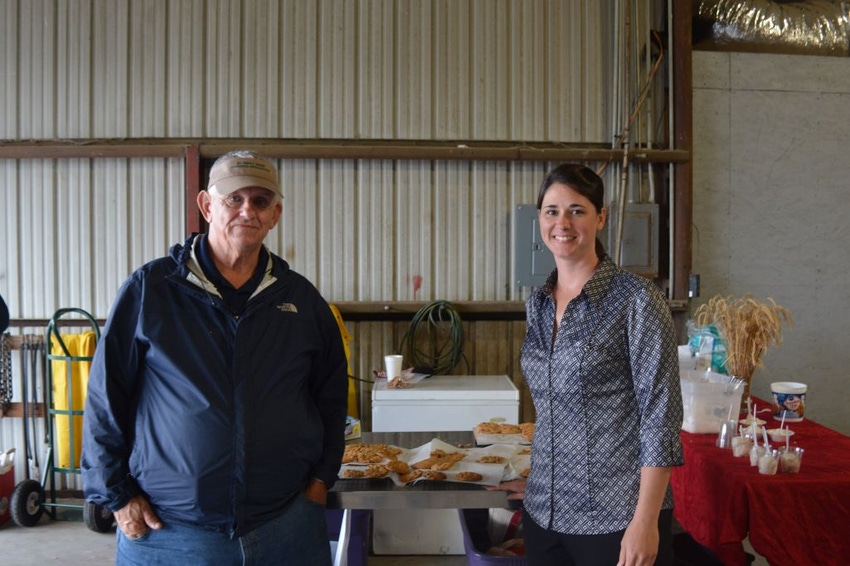
North Carolina is seeing a down and disappointing wheat crop this year, but there are lessons to learn for making a better crop next year.
Wet weather this year has lowered nutrient uptake in wheat and increased disease pressure. Due to a soggy February, Pythium root rot and crown rot were problems across the state while some fields also saw damage from two freeze events in early April.
“In a five-year cycle, we have two real good crops, two in between crops and one crop that goes the other way. And I think the other way is our crop this year,” said Dan Weathington, executive director of the North Carolina Small Grain Growers Association at the Syngenta Wheat Field Day in Ayden May 5 .
“Acreage is down. USDA says 490,000 acres, but I think it’s 400,000 acres and probably 100,000 of those acres look pretty bad. If I could summarize this crop, I would say it’s like going to the grocery and you see carrots and baby carrots. We have baby wheat this year,” Weathington said.
Ron Heiniger, North Carolina State University Extension cropping systems specialist, said yields will be down this year, but lessons can be learned to make higher yields next year. He said it is critical to understand what the wheat crop is doing each year and prepare for scab or other diseases that are coming down the pike.
“Because of economics, we have to look at 60, 70, 80 bushel wheat yield. We’re capable of doing that. We’ve done that in this state in the past, and I think we have to review what went wrong this year so we can learn from our mistakes and find a way to do a more consistent job,” Heiniger said.
Heiniger called poor nutrient uptake the “Achilles heel” of the state’s wheat crop in 2016. Because of all the wet weather, root systems were shallow and the plants could not develop deeper roots.
“We had periods in late February where those soils were saturated. Nutrient uptake won’t happen in a saturated soil. We had poor nutrient uptake. Wet conditions require that we think about that and change our approach for a nutrient program for wheat,” Heiniger said.
In periods of heavy rainfall, Heiniger encourages wheat farmers to split fertilizer applications, with one application in January and another application in February.
Wheat doesn't like wet feet
The biggest headaches this year were root diseases brought on by all of the heavy rain. Heiniger said a lesson learned is to be aware of root diseases and to take action when they do occur. He said well drained wheat fields are a critical management tool because wheat plants don’t like wet feet.
In the meantime, Angela Post, N.C. State’s newly hired Extension small grain specialist, told field day attendees, that Pythium root rot was the first problem she had to deal with when she started work in March.
Post, a native of Randolph County, was on the faculty of Oklahoma State University for three years prior to returning to North Carolina. At Oklahoma State, she worked on red winter wheat, canola and weed management. Post earned her bachelor’s and master’s degree from N.C. State and her doctorate from Virginia Tech.
Post said a major challenge of Pythium root rot is that it produces a resting spore which creates a built in inoculum, so if the state sees another wet year or moderately wet year, the disease can show up again. She said the resting spore can last two to three years and over winters in stubble.
“Pythium root rot is a new beast for us,” Post said.
About the Author(s)
You May Also Like






